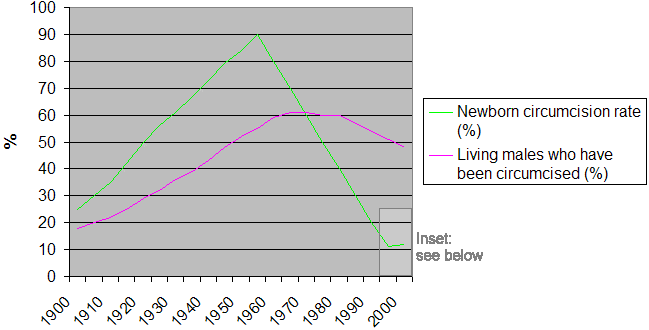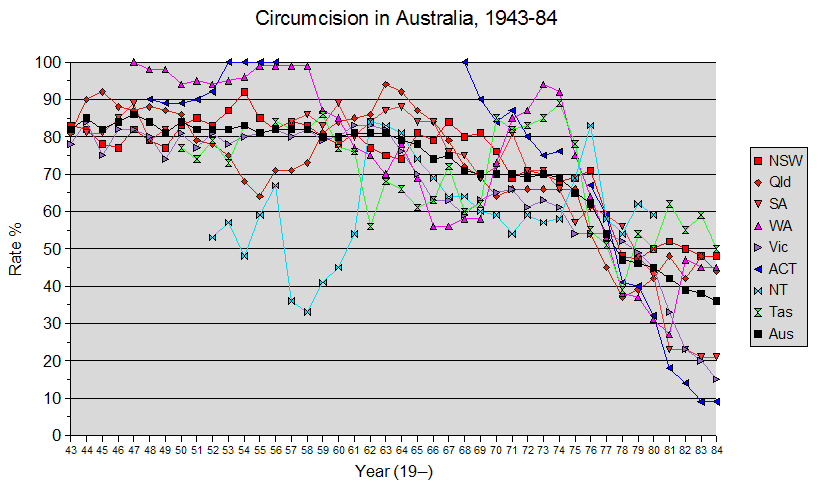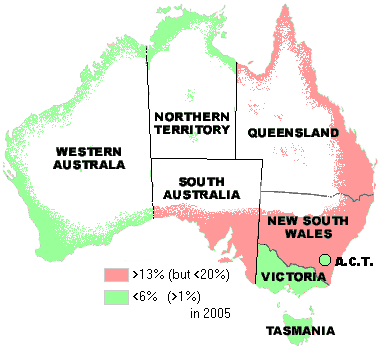 Indigenous Australians Australian aboriginal culture is much older than every other on earth, and very different. It is commonly supposed that Aboriginal culture didn't change through millennia, but in fact, nobody knows. At the time of first contact, the only form of circumcision on the continent was practised as a male initiation ritual by a limited number of Aboriginal nations in Arnhem Land and the desert areas of what is now the Northern Territory and parts of Western and South Australia. Some tribes subincise (slit underneath), not just the foreskin, but most of the length of the penis, opening up the urethra. The reason given for the operation is to draw blood for ritual uses, but that does not explain why so much is done, and just there. North-western tribes circumcise, and they believe the foreskin turns into a bat (it is elastic like a bat's wing), a symbol of death, because the initiation is seen as a kind of death. You may say that is "primitive", but very similar imagery is used when nuns prostrate themselves, "dying to this world," (and looking very like bats!) to take their vows. It has been suggested that - contrary to the common view that Aboriginal culture has been isolated since time immemorial, with a commonly quoted figure of 40,000 years - circumcision was brought to Australia by traders from the Indonesian archipelago. Australian Aboriginals from other areas are reported to protest that in general, they did NOT traditionally practise circumcision. Like the Tikopians, Aboriginals place immense importance on their initiation rituals, but their circumcision, where it occurs, is only the beginning of a long period spent apart from the tribe, being instructed in tribal secrets. Little was known about these rites until they were studied by late 19th - early 20th century anthropologists, and they did not affect European practice. Non-Aboriginal Australians The white population of Australia is similar to that of the United States - originally largely from working-class Britain, with a later admixture from Europe. As in the US, circumcision became fashionable early in the 20th century, largely influenced by Britain. It increased more rapidly in 1910-20, passing 50% before the rest of the English-speaking world. The reason for this is probably acute fear of "venereal" (sexually transmitted) diseases such as syphillis, during and following the 1914-18 war. Another source may be the misguided advice offered by New Zealand's Dr Truby King in a widely-read babycare manual, to ensure that the baby's foreskin was retractable within a week after birth, causing injuries that "required" circumcision. Australian's greater social equality than Britain also meant that a single standard of neonatal treatment prevailed across the board.  - based on a table on an Australian website, The rate among adult men never reached the height of the infant figure because of the wave of immigration from Europe (especially Greece and Italy) in the 1950s and 1960s. More exact figures for several decades have since come to light:  - from "Circumcision in Australia: prevalence and
effects on sexual health" This shows that the nation-wide rate (black squares) fell below 50% in 1977. In that year the "to look like his peers" argument became contrary to fact: most of his peers since then have been intact. Thus most Australia-born males under 30 (in 2008) are not neonatally circumcised. In Western Australia between 1943 and 1959, and in the ACT between 1945 and 1969, hardly a single baby escaped, suggesting it was done so routinely that parents were not asked. (The wide swings in Northern Territory reflect its small population. Figures for sample sizes below 15 are not shown.) The decline since the 1950s has been nothing like as complete as in New Zealand. After falling sharply in all states in the late 1970s, a gap appeared between "little-circumcising" and "very-little-circumcising" states.  Circumcision is currently more or less static in states where the rate is already low, and has been fallling in states where it is higher:  In Queensland, the higher rate was until recently largely driven by one doctor. But throughout the country, it is still less than a third that of the USA, and less than that of the least-circumcising region of the US, the Pacific coast. Circumcision in Australia is dealt with in more detail on these pages:
|